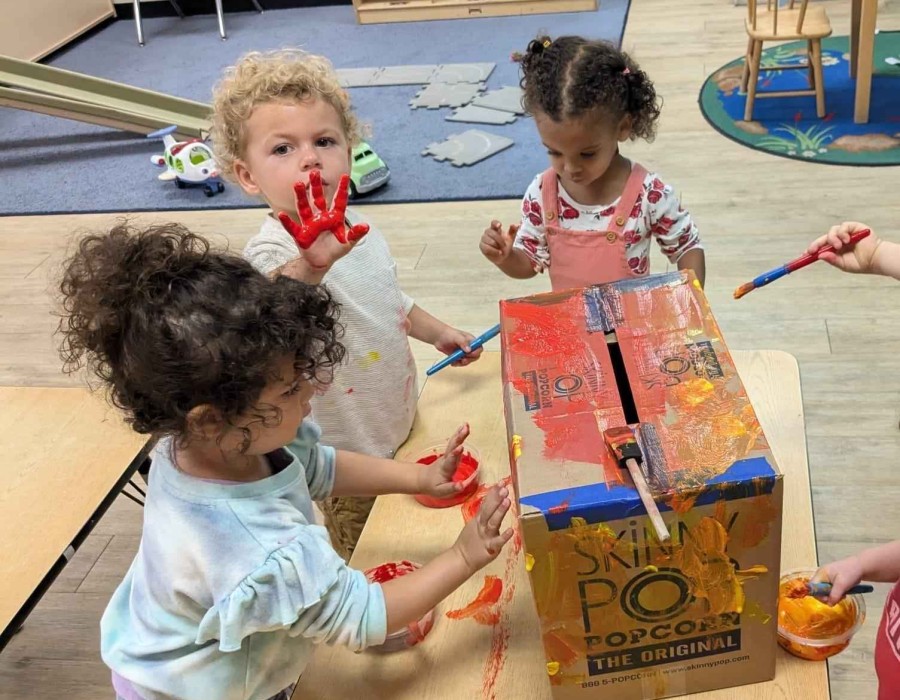It is not only a period of learning shapes, letters, and sharing toys; early childhood is also an abundant period during which children can start relating to Jewish identity in a way that is meaningful and age-related.
Since identity cannot be imparted upon you by a lecture, it is achieved by children through absorbing, experiencing stories, rituals, play, relationships, and community.
In this blog, we will discuss how an early childhood program can intelligently combine tradition and play-based learning how we can plant the seeds of Jewish identity without disregarding the natural way of exploring the world of the child.
Why Address Identity During the Early Years?
1. Forming a Sense of Belonging
Young children are intrinsically developing some sense of where they belong. Once their day is filled with Jewish rituals, stories, and celebrations, children are starting to internalize that they belong to a long tradition and community that does not just belong to the four classroom walls.
2. Precursors to Future Learning
When learning to be adaptive in the early days, it is somehow about giving references to the future of Jewish learning. A child with a good experiential background of Jewish life has higher chances of being interested in the traditions of the holidays, the Hebrew language, or Torah study in the future.
3. Identity as Lived, Not Abstract
Early childhood identity should not be a burdensome course subject. Rather, it should be lived. Think of lighting a candle, sharing a blessing, telling a story about a Jewish hero, and elaborating on some integral aspects of the daily life of children.
Taking part in Jewish preschool programs can make children thoughtful and more leaned towards the culture and diversity, while being adaptive to the traditions.
Principles for Balancing Tradition + Playful Inquiry
Here are some guiding principles and examples:
1. Invite, Don’t Impose
Provide Jewish rituals in a manner that is both welcoming and gives room to exploration by the children. As a case in point, light a candle at the same time every Shabbat; however, leave the children to decide who will light the candle, who will say the prayer, or who will set up the candlesticks. Children can in due course, take ownership of the ritual.
2. Anchor in Stories and Imaginative Play
Children love stories. Utilize Jewish stories - of the matriarchs and patriarchs, of heroes, of holidays, as springboards to imaginative play. They can be invited to a workshop to make dreidels during Hanukkah, or to a kitchen bakery during Passover.
3. Inclusivity of Music, Movement, and Art
Ritual should not be fixed. Blessing singing, weaving sukkah garlands, and dancing with the Torah are some manifestations of embodied, kinesthetic learning. Carrying ritual with their bodies and voices makes it more meaningful when children do it.
4. Permission Child-Led Inquiry/Reflection
Curiosity is natural in children. Should a child say, Why do we say this blessing? Or where does the menorah go? — lean on it. Those questions can serve as starting points for mini-investigations, stories, exploring some art, or group projects.
5. Involve Families in Cooperation
The teacher is not the only person whose role is to ensure Jewish identity. In the first place, and best bearers of tradition are families. Ask families to bring stories, rituals, and objects to the classroom. A family may perhaps lead a holiday craft, or tell a favorite Passover memory.
Such an alliance will make the children perceive tradition as living in both the family and school settings, as is the case with your site.
Vision Forward for APJCC Preschool
In APJCC, your philosophy revolves around play, inquiry, family partnership, and Jewish values. There is no need to shun the cultivation of identity because it means to fill it with Jewish will. APJCC is the best Jewish preschool where children not only learn about Jewish life, but also live it in mini-moments, with naivete, fascination, and power.





Comments